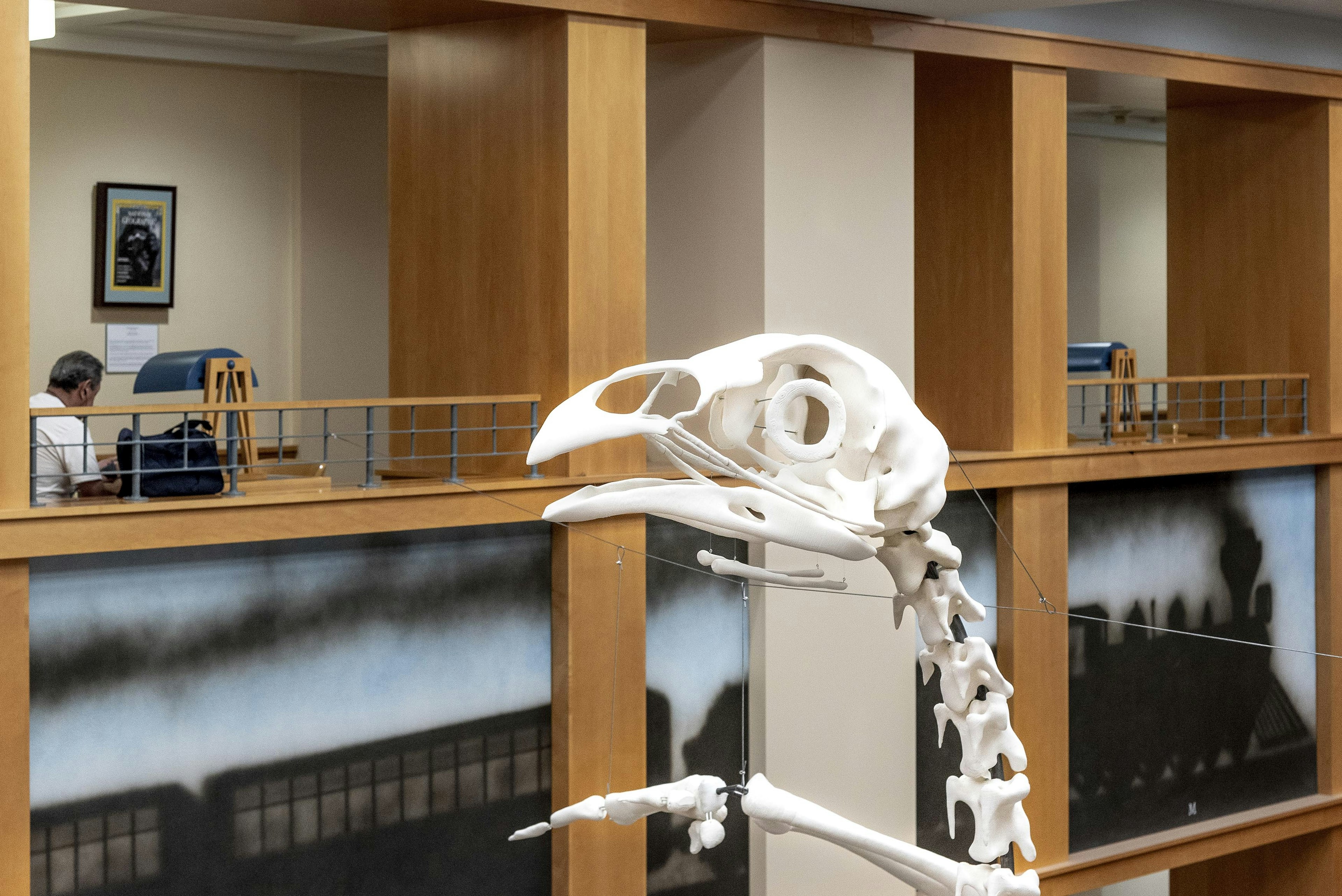Andreas Greiner on Monument for the 308


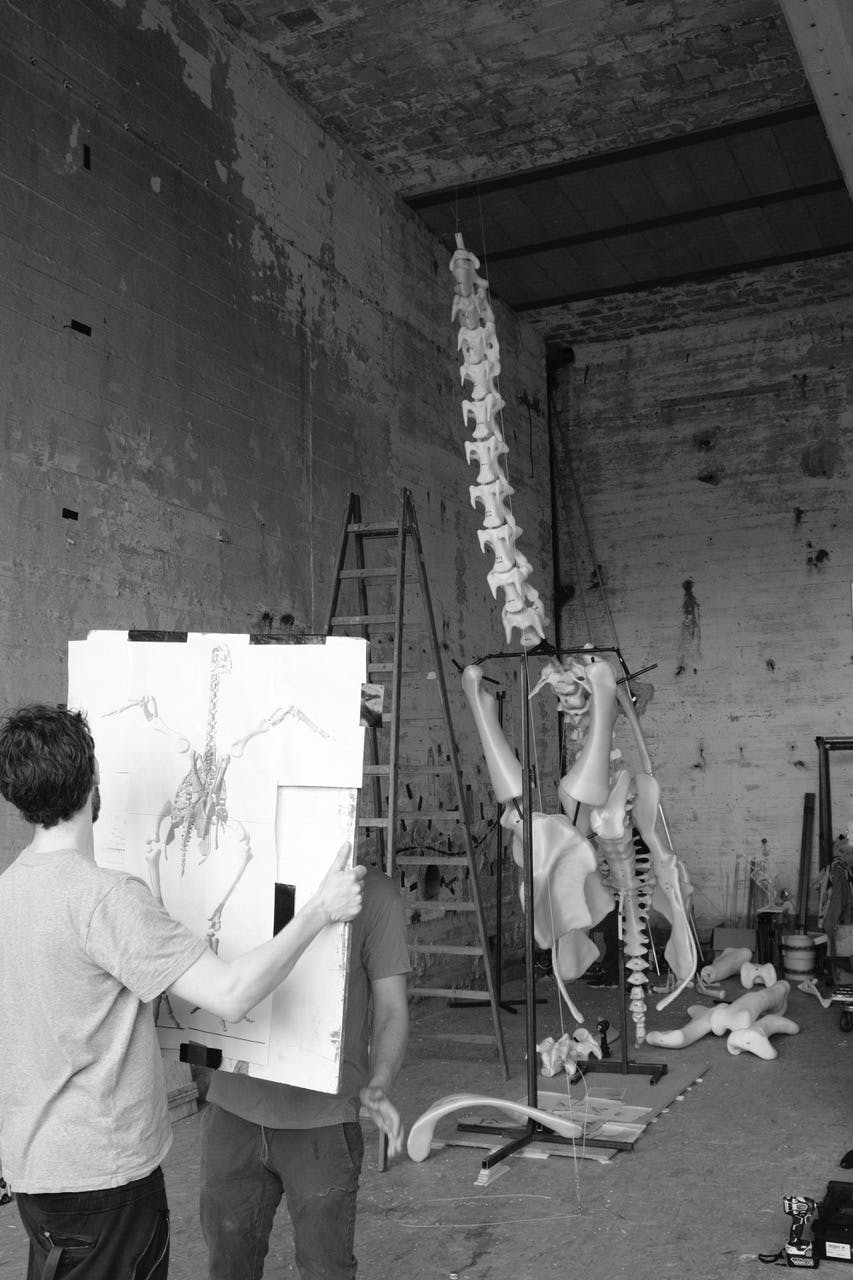
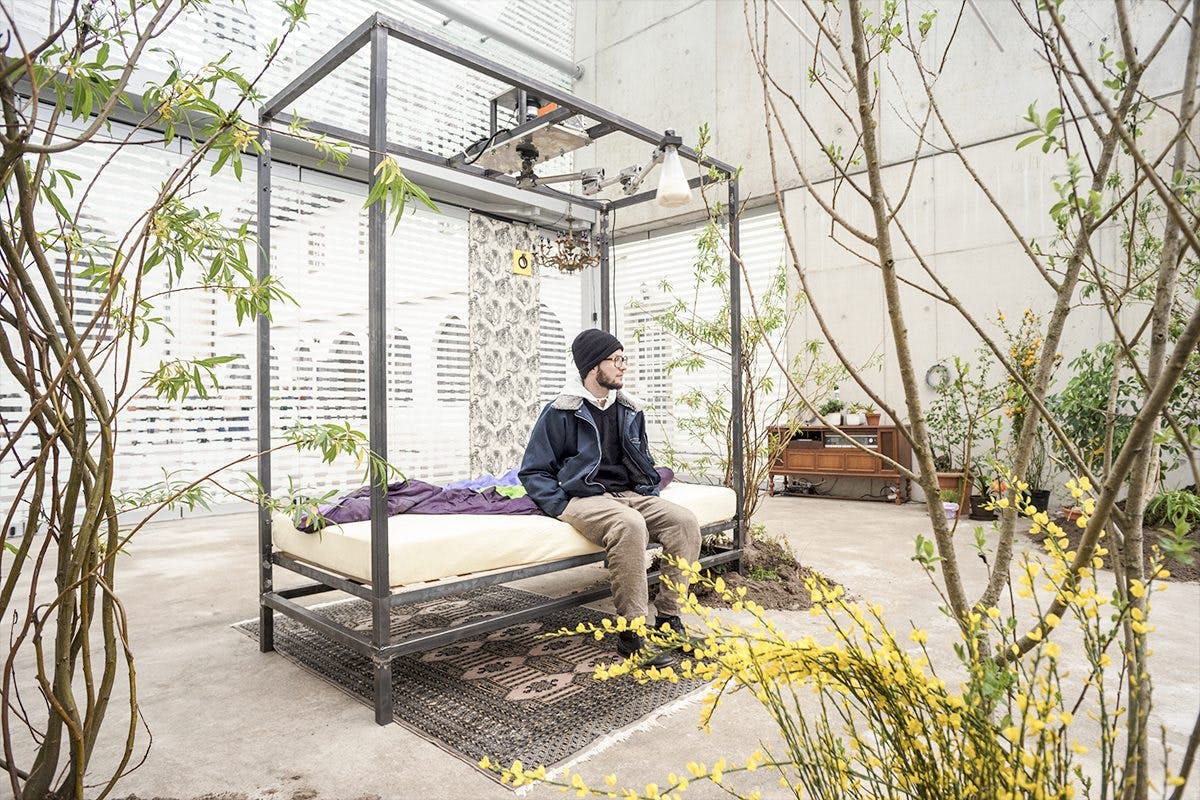

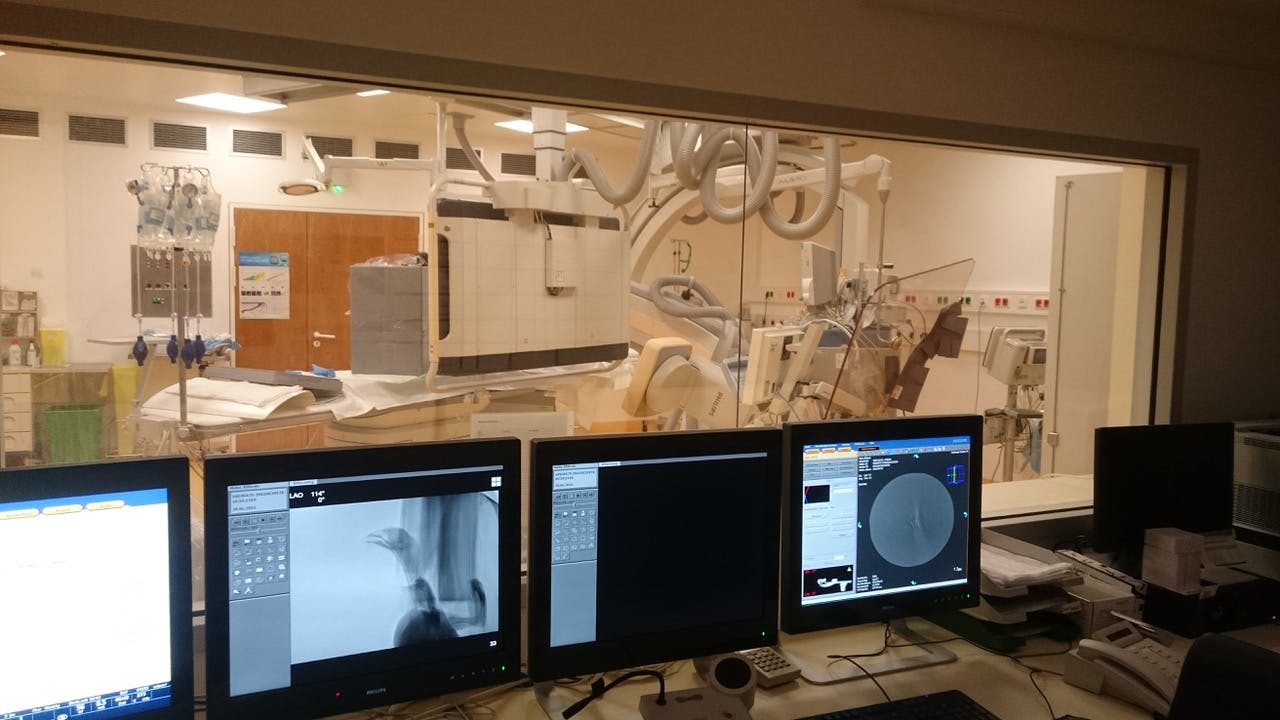
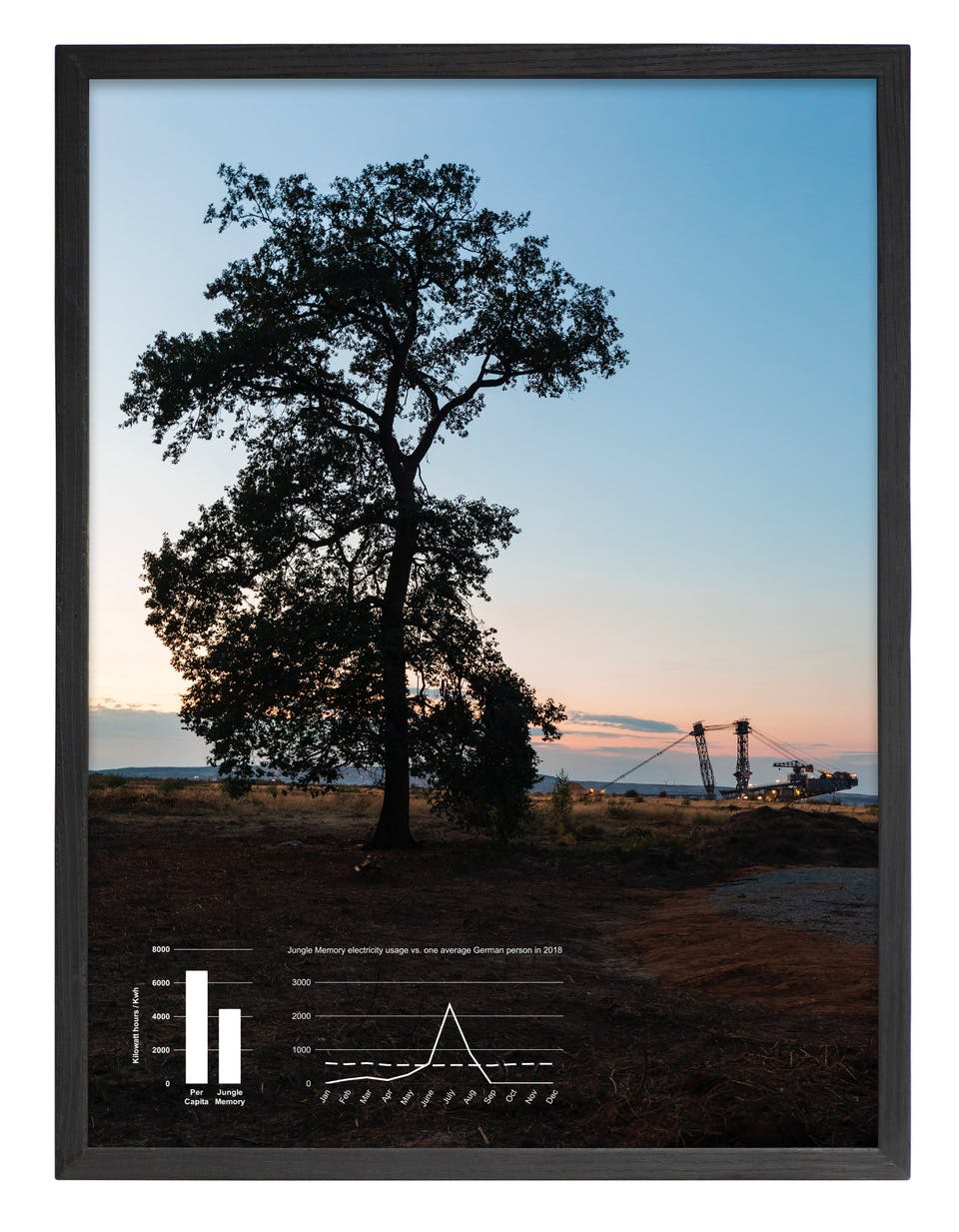
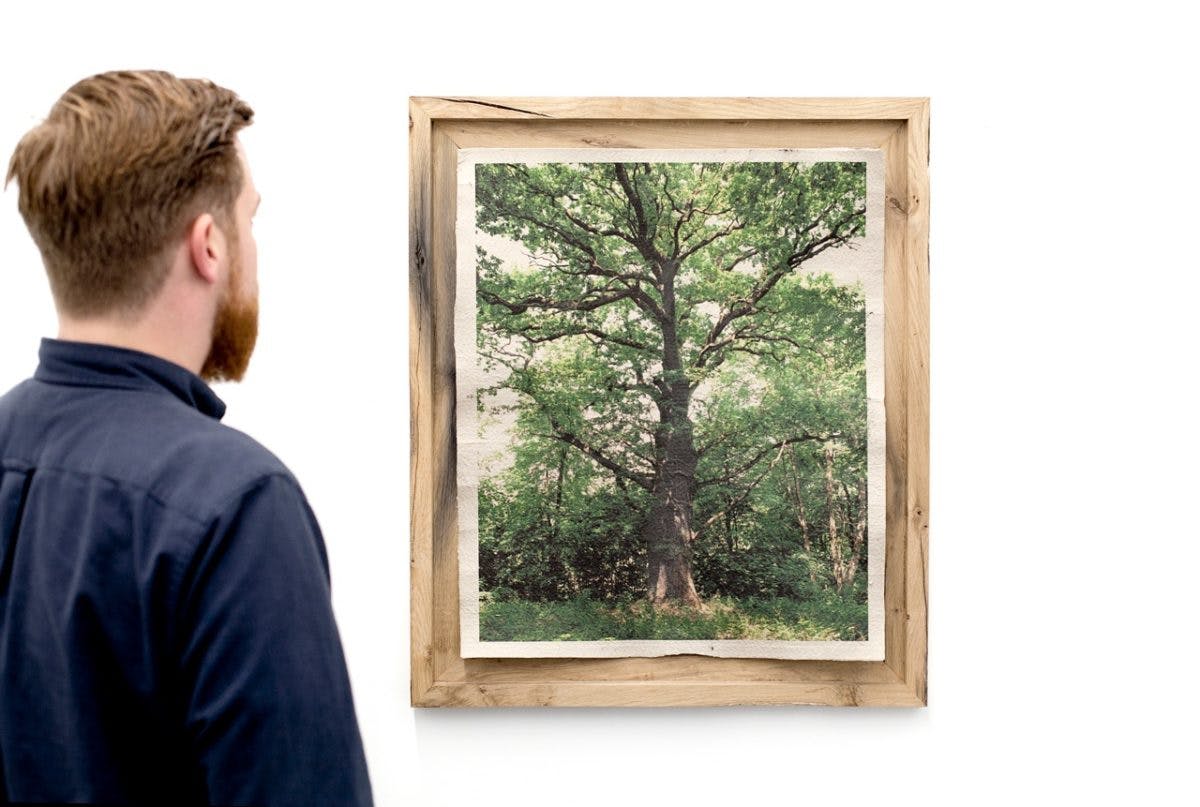
Black Cube’s Executive Director + Chief Curator Cortney Lane Stell interviews German artist Andreas Greiner about his work Monument for the 308—a 24-foot-tall sculpture of a broiler chicken skeleton now on view at the Denver Public Library.
Andreas Greiner on Monument for the 308
Monument for the 308 is a 24-foot-tall sculpture of a broiler chicken skeleton by German artist Andreas Greiner. This artwork, which resembles a dinosaur skeleton in a natural history museum, is positioned within the great hall of the Denver Central Library. The artwork focuses on human’s impact on the world, as seen through the genetic changes this animal has experienced because of humans. Today, these chickens are bred in staggering numbers with an anatomy manipulated to serve human meat consumption. Monument for the 308 pays tribute to an animal species of our time and acknowledges the reciprocal dependency between broiler chickens and humans.
Andreas Greiner’s Monument for the 308 is a part of MONUMENTAL, a series of public, contemporary artworks and community engagement programs that explore, question, and transform the role monuments play within society.
Cortney Lane Stell: Can you describe how you came to the concept for the Monument for the 308?
Andreas Greiner: In everyday life, we hardly ever are aware of the billions of domesticated birds being bred, although they are all around us. Bred as our livestock, they are one of the most plentiful animals on earth as our livestock, domesticated into perfect, little meat factories. And even closer to home (at least if you live in the city), the hybrid broiler chicken is the most bought animal in western supermarkets. It's so ubiquitous in our modern lifestyle and so symptomatic of it as well.
However, most of us encounter it as an abstracted pre-packed piece of meat in supermarkets or an already cooked meal.
I wanted to dedicate a monument to the broiler chicken, one which will stand as a symbol of our (post-)modern times –– a sculptural magnification of the human intervention into these birds, their relationship to the environment, and human-designed anatomical changes. Just like their ancient ancestors, the dinosaurs, broiler chickens might one day become indicative of the early 21st century. If, in thousands of years, humans still exist and still exhibit natural history, then perhaps the broiler will be chosen to represent this unique moment where we are witnessing the merging of nature and culture.
CLS: How does this work fit within your larger practice?
AG: Very generally, I am interested in the boundaries of my practice as an artist. Especially the boundaries between culture, of which art is an integral part, and nature—the realm of the non-human life—though technology is broaching this boundary increasingly. As such, I often use unconventional image, working with technologies, such as a CT-Scan, or electron microscopy to illuminate (literally) artistic subjects that rarely make it to the front pages of the arts, or even human perception and consciousness. For me, art is a way of metaphorically pointing out our human condition, the status quo of society at a certain moment in time.
CLS: Given your interest in subject matter that falls outside of the canonical arts subject matter, and also your interest in relating to the human condition… what does it mean for you to display the Monument for the 308 at a public library in the United States?
AG: The books in The Denver Central Library contain a lot of human knowledge and cultural heritage –– in a way that mirrors how the enlarged bones of Monument for the 308 also store a specific part of cultural heritage. This history is not written down in words, but expressed through the shapes, proportion, and forms of the bones; this information tells us a lot about the current human-nature relationship and how we co-create other living non-human beings on earth. The sculpture is a giant representation of the human-inflicted changes upon this species, for within its physiology and anatomy, there is a record of artificial change.
For example, in the sculpture you see the right foot-bone is broken, which is the reason for its death. Further, you can also see non-finished bone cores, still waiting to merge and become finished bones. All of this indicates that the chicken is of young age. Proportionally, the large leg bones are to carry vast amounts of meat and to keep up with a fast-growing upper body.
Furthermore, the Monument for the 308 might mirror our contemporary urge for efficiency and consumption but also for overproduction of waste. Of course, humans cannot escape their own metabolism and its needs, but the leading capitalist culture and ideology has distorted those needs and thus, enhanced our current ecological problems on Earth.
CLS: You have produced a smaller Monument for the 308 sculpture, which is on view in the natural history museum in Bern in Switzerland. There is a tension between ‘real’ and ‘fake’ in the work. Are viewers often riddled with the question of its scale and authenticity?
AG: The work is always authentic and non-authentic at the same time. I hope the viewers debunk this ambivalent quality. On the one hand, it is obviously 3D printed—I am not hiding the traces or mistakes of production—they are present on the surface structure, like translation mistakes in a book when it is translated from one language to another. The way that the sculpture is assembled references on the stereotypical presentation style of dinosaurs in a natural history museums, but upon closer inspection, it might become obvious that it is fake.
The real (small) chicken bones, on the other hand serve as a model for the 3D prints and are in fact telling an authentic story about our present culture. They are specific real time markers of our current civilization, and of a potential future archeology.
CLS: You mention a conceptual interest in the human penchant for overproduction of waste within this work. I believe you also have an interest in the ecological crisis within your wider art practice. This is contrasted by the broader contemporary art world, which is globalized and produces a lot of waste. How do you reconcile these tensions within your practice? Do you weigh the message of the work against the carbon footprint? Can you explain how you wrestle with this and how it impacts your art practice?
AG: I agree being a part of the globalized art system, especially the art market with worldwide biennials and art fairs, makes it hard for artists to criticize environmental problems truthfully and without contradiction. "Living the dream" of being an artist is an enormous privilege, one that cannot be easily be disentangled from its material conditions and geographical logistics. If the art world really wants to make a difference and contribute to cultural action against climate change in 2020, producing art works with a message won’t be enough anymore. We all need to act towards a cultural change of less consumption—ironically by acting less, consuming less, producing less.
Personally, I haven’t travelled by airplane since January 2018. I try to change my eating habits: no meat, no fish, no industrially produced animal products. I am against energy from the brown coal industry in Germany and I participate in demonstrations against it. Politically, I vote for green solutions. Nevertheless, I can’t escape the fact that, for example, my artwork Monument for the 308 is currently exhibited at The Denver Public Library, thus had to be shipped over to the U.S. and then transported to Denver. One of my assistants flew over to assist with the installation in person. This one transatlantic flight has produced nearly double the amount of the ca. 2 tons of carbon dioxide that an average person should use in a year in order to prevent a rise of temperature of more than 2 degrees Celsius (according to the IPCC). Statistically, an average German person exceeds this limit 5 times over, causing average emissions to already reach around 10 tons of carbon dioxide per capita in a year. An average U.S. citizen exceeds this limit more than 8 times by emitting 16 tons of carbon dioxide per capita in a year. I am sure if we were to calculate the average footprint of a contemporary globalized artist like myself, this ratio would be even worse. Sadly, there seems to be a strong connection between consumption, artistic success, and the resulting pollution. Currently, I am struggling with this and I am trying to find solutions.
CLS: It seems like a lot of your work relies on empathy from the viewers, whether it be relating to common species such as chickens, or less commonly considered species such microorganisms. By working with, or using, other species does your work attempt to reject the privileging of human existence over nature? Do you intend to provoke a more expansive sense of empathy with viewers?
AG: Yes.
CSL: I feel that as a species we have a hard time facing the reality of the climate crisis, we see this in the large amount of society that simply chooses to deny this reality. Your use of the broiler chicken is very interesting because, for me, it can bring the conversation easily to the individual. Meaning I have the choice to choose what I eat and how it effects the wider world. In some way, it can function similarly to how the impact of using plastic straws has brought the large overwhelming crisis to the individual level. In Denver I have heard many viewers consider their eating habits when looking at the work. Given this, I have two questions… Have you experienced this effect with viewers? Also, did you intend to have this effect on viewers? It is really one of the first times I have seen people consider their daily habits from interaction with a contemporary artwork.
AG: The perception of an artwork is a tough, but important question. I guess just like me artists spend a lot of time trying to anticipate its perception. Art is part of an ongoing public discussion as well as a tool to for human culture to self-reflect on itself. The truth however is that I can’t control the public interaction - at a certain point I have to let go and leave the art piece to speak for itself. The very same art piece can mean something completely different from one place to another, from today to years from now, or from a societal level to an individual. To be honest I had some strong doubts during its production as I could not foresee the ways in which people would interact with my gesture monumentalizing a common broiler chicken. Therefore, while I am inspired and encouraged by this recent feedback, I cannot say that this was the goal of the artwork. I follow an inductive path where one question (artwork) leads to another and I mostly work on things that I don’t fully understand in the moment. By leaving part of the artworks interpretation open to the audience perception, it allows individuals their own interaction and relationship with the artwork. The reception and discussions surrounding this artwork in Denver have been a wonderful surprise for me. I am happy to hear that a work of art that I initiated has an impact into a direction that I personally agree with, namely to consume less meat in a more conscious way and stop supporting our industrial food production.
